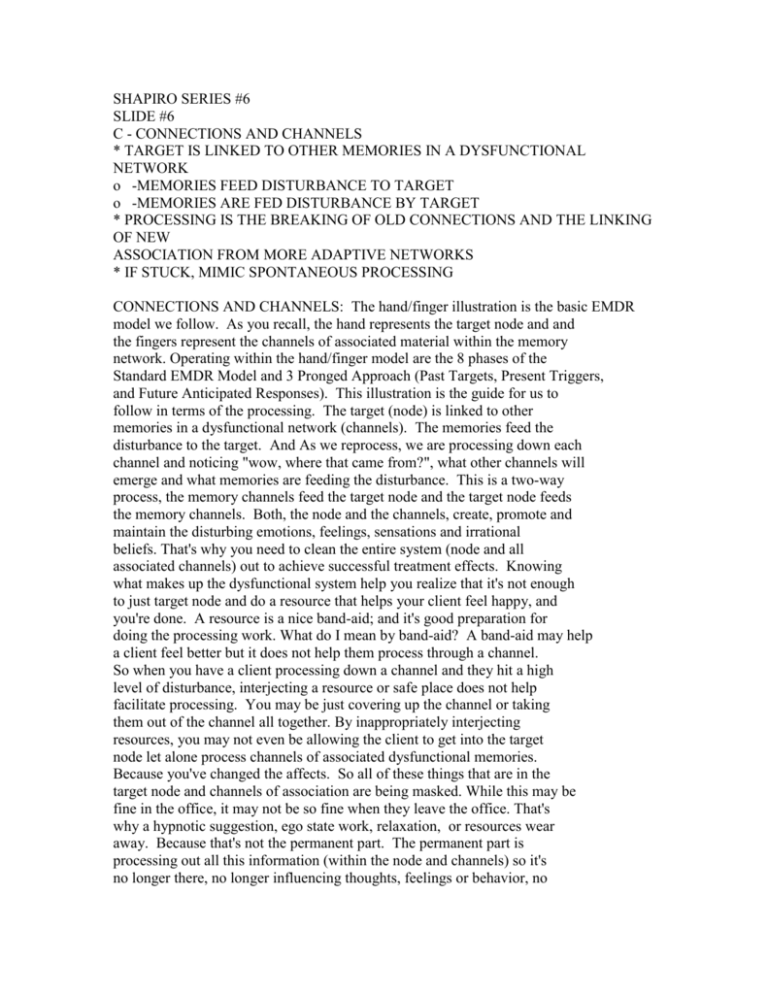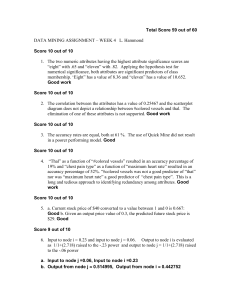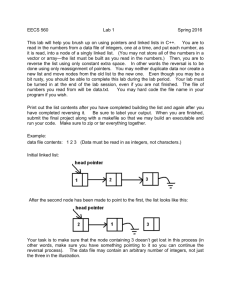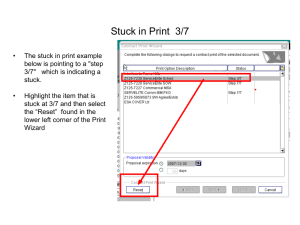shapiro series #6
advertisement

SHAPIRO SERIES #6 SLIDE #6 C - CONNECTIONS AND CHANNELS * TARGET IS LINKED TO OTHER MEMORIES IN A DYSFUNCTIONAL NETWORK o -MEMORIES FEED DISTURBANCE TO TARGET o -MEMORIES ARE FED DISTURBANCE BY TARGET * PROCESSING IS THE BREAKING OF OLD CONNECTIONS AND THE LINKING OF NEW ASSOCIATION FROM MORE ADAPTIVE NETWORKS * IF STUCK, MIMIC SPONTANEOUS PROCESSING CONNECTIONS AND CHANNELS: The hand/finger illustration is the basic EMDR model we follow. As you recall, the hand represents the target node and and the fingers represent the channels of associated material within the memory network. Operating within the hand/finger model are the 8 phases of the Standard EMDR Model and 3 Pronged Approach (Past Targets, Present Triggers, and Future Anticipated Responses). This illustration is the guide for us to follow in terms of the processing. The target (node) is linked to other memories in a dysfunctional network (channels). The memories feed the disturbance to the target. And As we reprocess, we are processing down each channel and noticing "wow, where that came from?", what other channels will emerge and what memories are feeding the disturbance. This is a two-way process, the memory channels feed the target node and the target node feeds the memory channels. Both, the node and the channels, create, promote and maintain the disturbing emotions, feelings, sensations and irrational beliefs. That's why you need to clean the entire system (node and all associated channels) out to achieve successful treatment effects. Knowing what makes up the dysfunctional system help you realize that it's not enough to just target node and do a resource that helps your client feel happy, and you're done. A resource is a nice band-aid; and it's good preparation for doing the processing work. What do I mean by band-aid? A band-aid may help a client feel better but it does not help them process through a channel. So when you have a client processing down a channel and they hit a high level of disturbance, interjecting a resource or safe place does not help facilitate processing. You may be just covering up the channel or taking them out of the channel all together. By inappropriately interjecting resources, you may not even be allowing the client to get into the target node let alone process channels of associated dysfunctional memories. Because you've changed the affects. So all of these things that are in the target node and channels of association are being masked. While this may be fine in the office, it may not be so fine when they leave the office. That's why a hypnotic suggestion, ego state work, relaxation, or resources wear away. Because that's not the permanent part. The permanent part is processing out all this information (within the node and channels) so it's no longer there, no longer influencing thoughts, feelings or behavior, no longer triggering the client So So the entire system (node and channels) needs to be cleaned out. Processing is the breaking of old connections and the linking of new associations to form more adaptive networks. That's what the processing does. It's not purging it or just desensitizing it; it's making new links so that learning is taking place. When you are processing you get stuck, you use what I've called the cognitive interweave which people have misunderstood to believe that it's always just a cognitive thing. No, it's moving in a certain way or imagining what's the difference between how tall you are and how tall they were, or what would you do now? All sorts of things. What are you doing with a cognitive interweave? You're mimicking spontaneous processing. Let's return to the metaphor of the train traveling down the track and with every set, the train is moving one step along the way. At each stop, some negative information gets off and some positive gets on. If I'm stuck, something is blocking the track or there isn't the next piece of track to move along. The train is not moving. I'm going to help the client move to the next stop, by adding that next piece of adaptive track (network) that would have come in. I'm going to link it in, that is, mimic spontaneous processing. But mimicking spontaneous processing is a lot different than just introducing a resource. By introducing a resource, I've just taken the client just off the train. They're not processing any more. I've changed their STATE. Can resources be appropriately used at a certain time? In a reprocessing? Yes, but understand what you're doing and why you're doing it. ASSOCIATIVE CONNECTIONS: Our associative connections define our sense of self. So our past experiences have adaptively linked together to define what we are. Think of a spider web as our neuro-networks, as those memory networks that are linked together. These networks impact on perception of what's there, defining a sense of self, defining our sense of reality, of safety. How dangerous is a given situation? While you certainly need to be helping your client recognize what skills or resources they have now or recognize what skill or resource would help them now, it is important to recognize where they are now. Are they a present danger? You may use an interweave, for instance, to deal with it such as "What would you do now?" It is important, however, to recognize that this is the way they're seeing it, this is their world. Once the processing takes place, their perceptions change, the become more adaptive From this more adaptive perspective, the client is more able to see actual size of that danger and recognize what choices they have. The danger for us as clinicians, however, is to recognize whether we are encouraging our clients to concentrate on issues we think is important rather than on ones they need to process. Are we focusing them on safety when they really need to deal with their self image. Are you deciding what they should be processing or what they should be feelings when you introduce resources or cognitive interweaves, or are you allowing them to travel to where they need to go? This is a really important part. It's sometimes really difficult for clinicians to stay out of the way because they want to help. And of course we know what's better. But we don't always know what's better. So if we'll just let the processing take place, in the client's own associative network, honor them enough with a sense that their memory network will go where it needs to go unless it's stuck we stay out of the way. Of course, if they do become stuck, we have to help but if it's not stuck, try staying out of the way. END OF SHAPIRO SERIES #6




